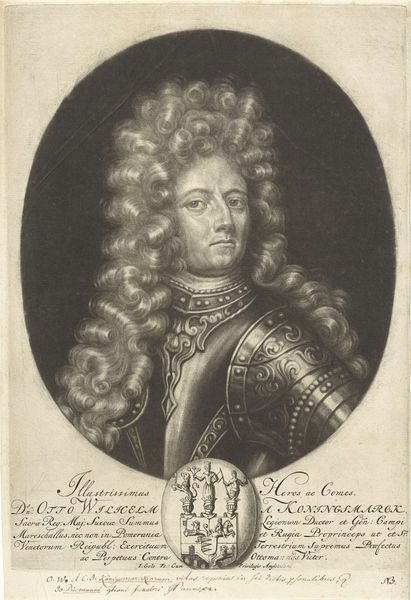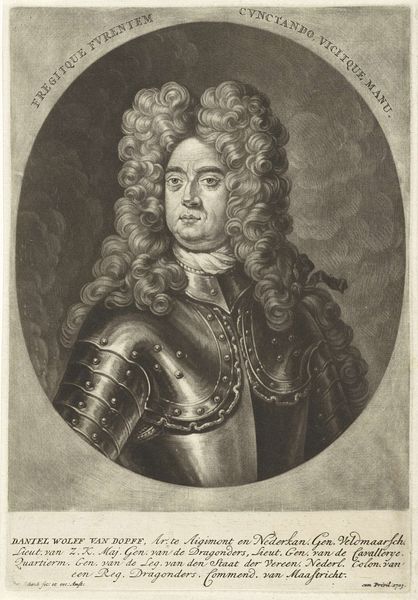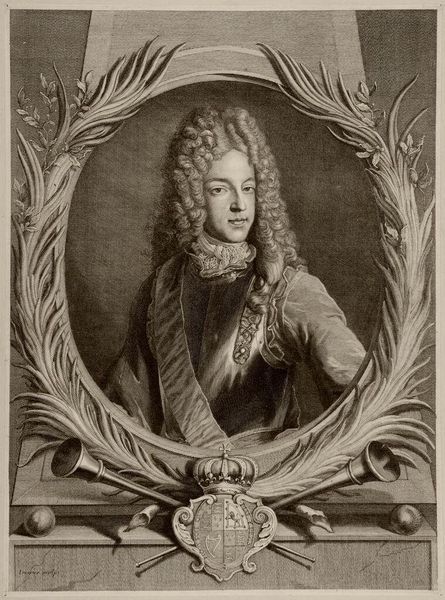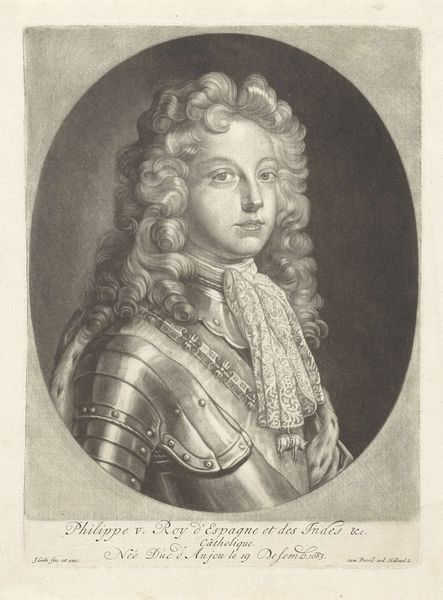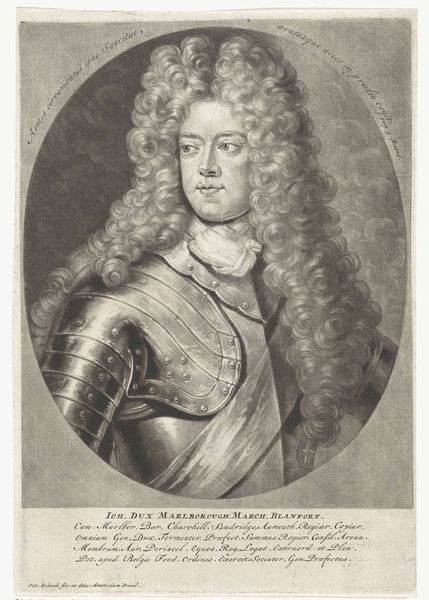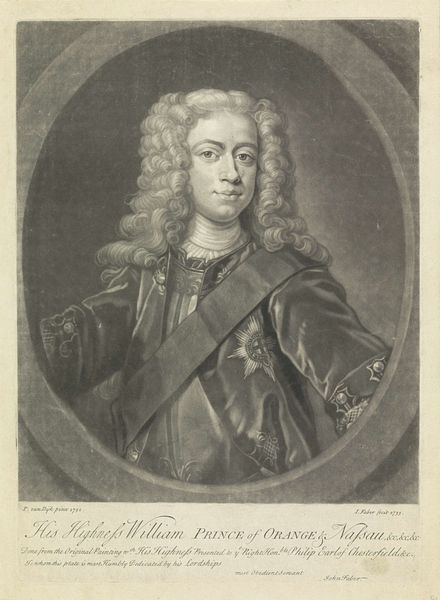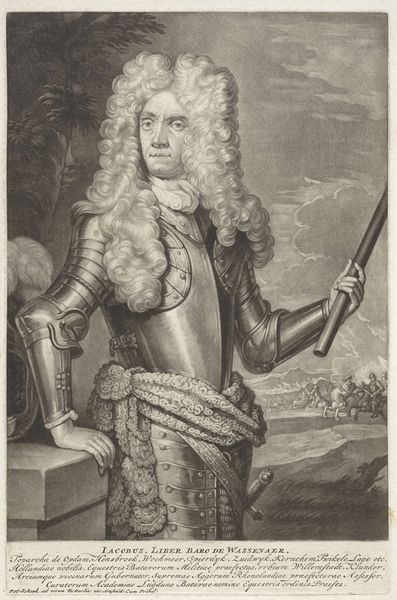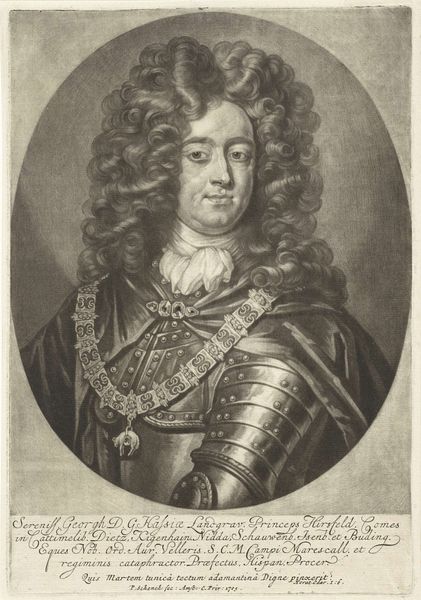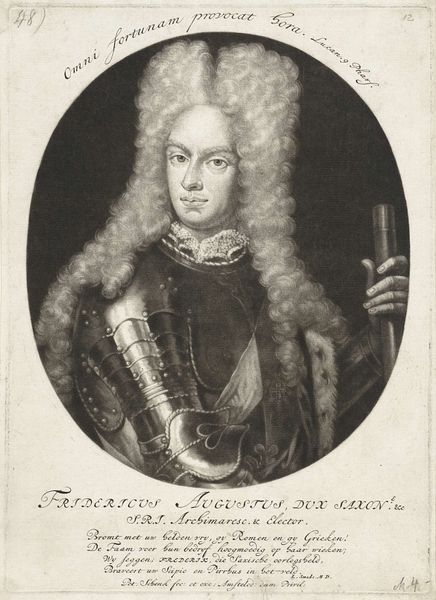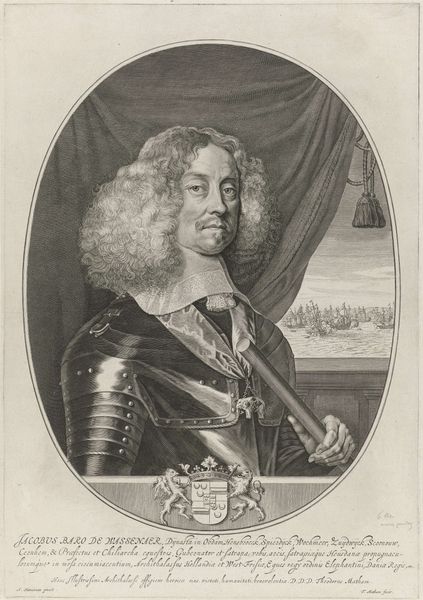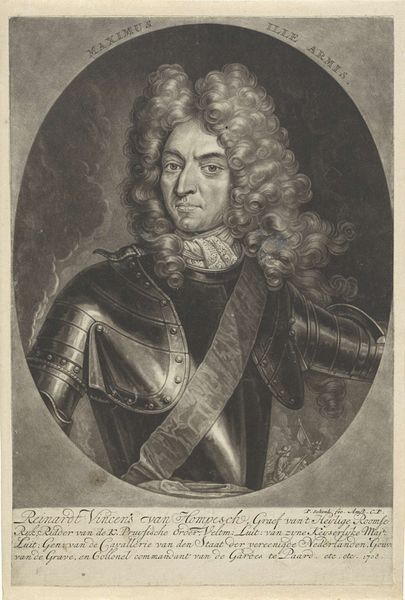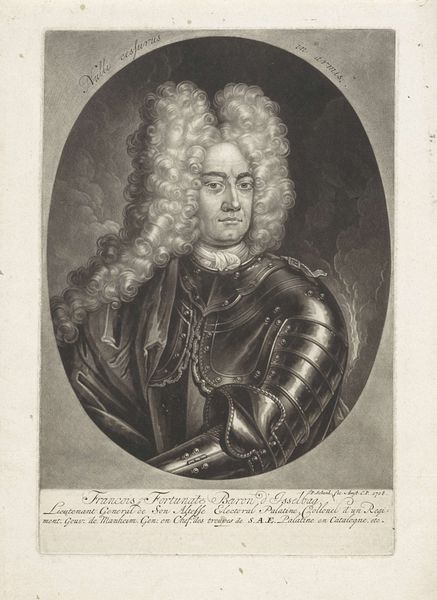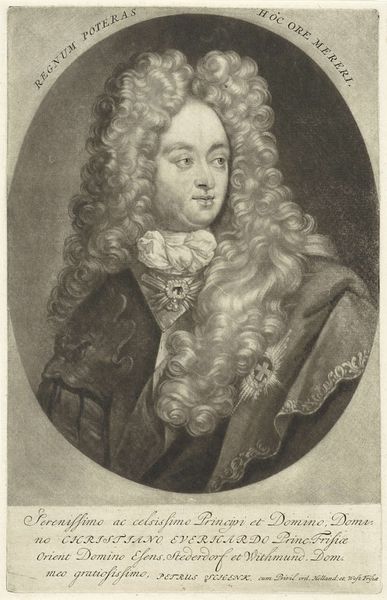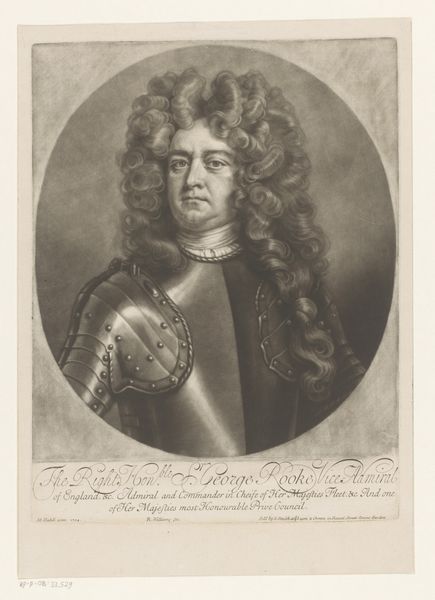
print, engraving
#
portrait
#
baroque
# print
#
old engraving style
#
portrait reference
#
portrait drawing
#
history-painting
#
engraving
Dimensions: height 273 mm, width 188 mm
Copyright: Rijks Museum: Open Domain
Curator: This engraving, entitled "Portret van James Butler van Ormond," was produced between 1683 and 1713 by Pieter Schenk. You can find this piece here at the Rijksmuseum. What's your immediate reaction to it? Editor: It strikes me as rather theatrical. All that swirling hair against the cool precision of the armor—a real study in textures. And that intense gaze; quite a presence achieved with simple lines. Curator: Indeed. James Butler, the 1st Duke of Ormond, was a significant figure in Anglo-Irish history, a statesman, and a soldier. The print is emblematic of the power and status associated with individuals of his standing. Note the inscription at the top. The portrait functioned to communicate his authority to a wide audience through print culture. Editor: It makes me think about the laborious process involved in creating engravings like this. Each line meticulously carved into a metal plate, the artist as artisan meticulously working for days to replicate Butler’s image. Also, the material of his armor–what was it? The production must have been complex, a testament to both skill and resourcefulness. Curator: Absolutely. The circulation of such prints played a crucial role in shaping public opinion and reinforcing social hierarchies. It also reveals an emerging interest in portraiture beyond the realm of painted works enjoyed only by the wealthy. Engravings allowed a wider dissemination of imagery and ideology. Editor: Looking closely, I notice the contrast in the backgrounds–palm trees and a naval scene with ships amidst smoke. This speaks to James Butler's colonial power, and his position with trade interests. It is more than just an individual’s face; this is about the network of resources required to construct identity. Curator: Precisely, and by positioning Butler with the Navy behind him, it conveys his dominion. Consider how Schenk used relatively inexpensive materials, print, to propagate visual signifiers to bolster the Duke of Ormond. The effect has, indeed, remained timeless. Editor: Seeing this print today offers a reminder of how art could reinforce a certain class position in the material conditions of that time, offering a fascinating perspective on power, production, and public perception in 17th-century society. Curator: It has been truly insightful considering how the artwork operates within its complex socio-historical fabric.
Comments
No comments
Be the first to comment and join the conversation on the ultimate creative platform.
